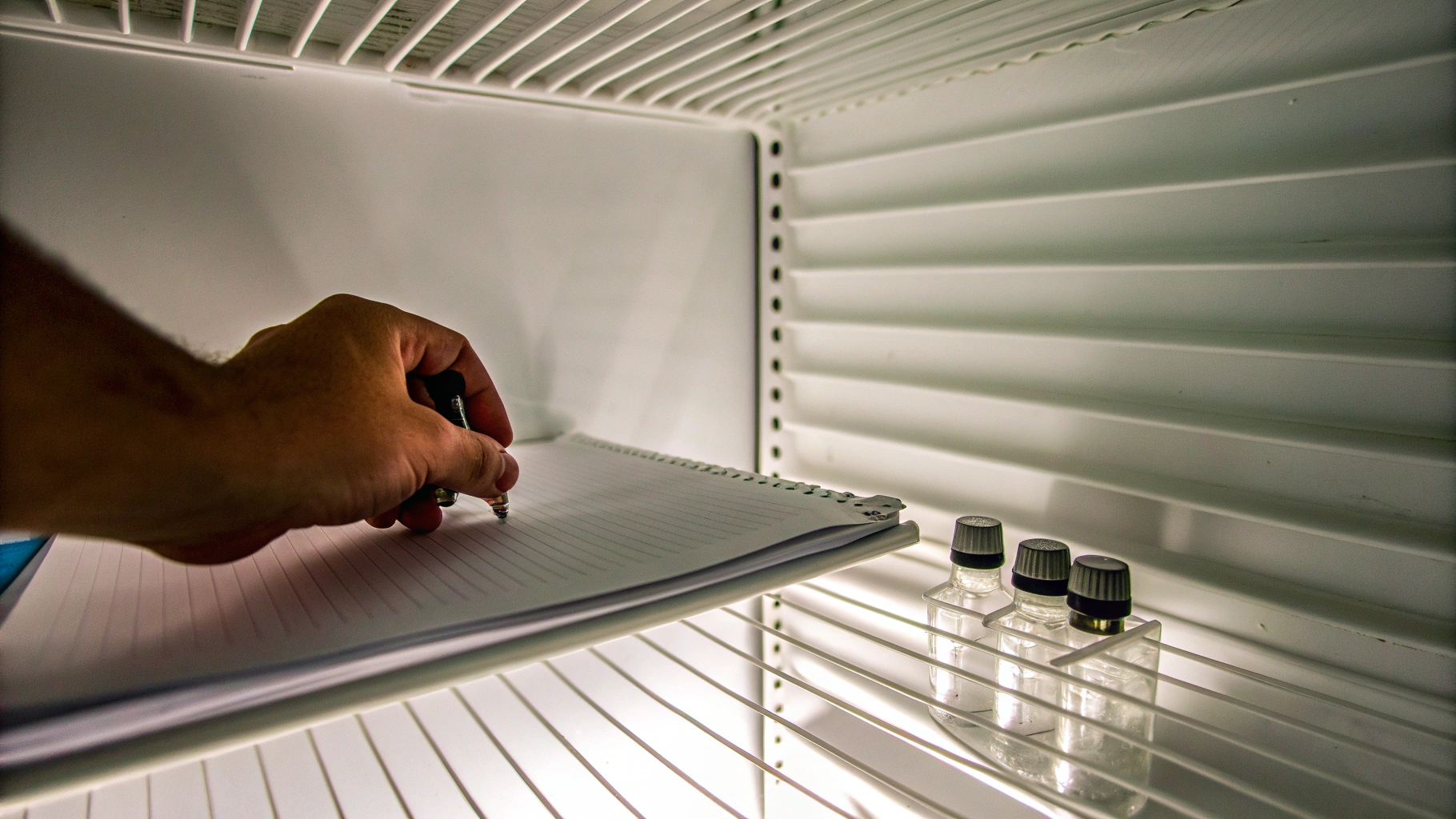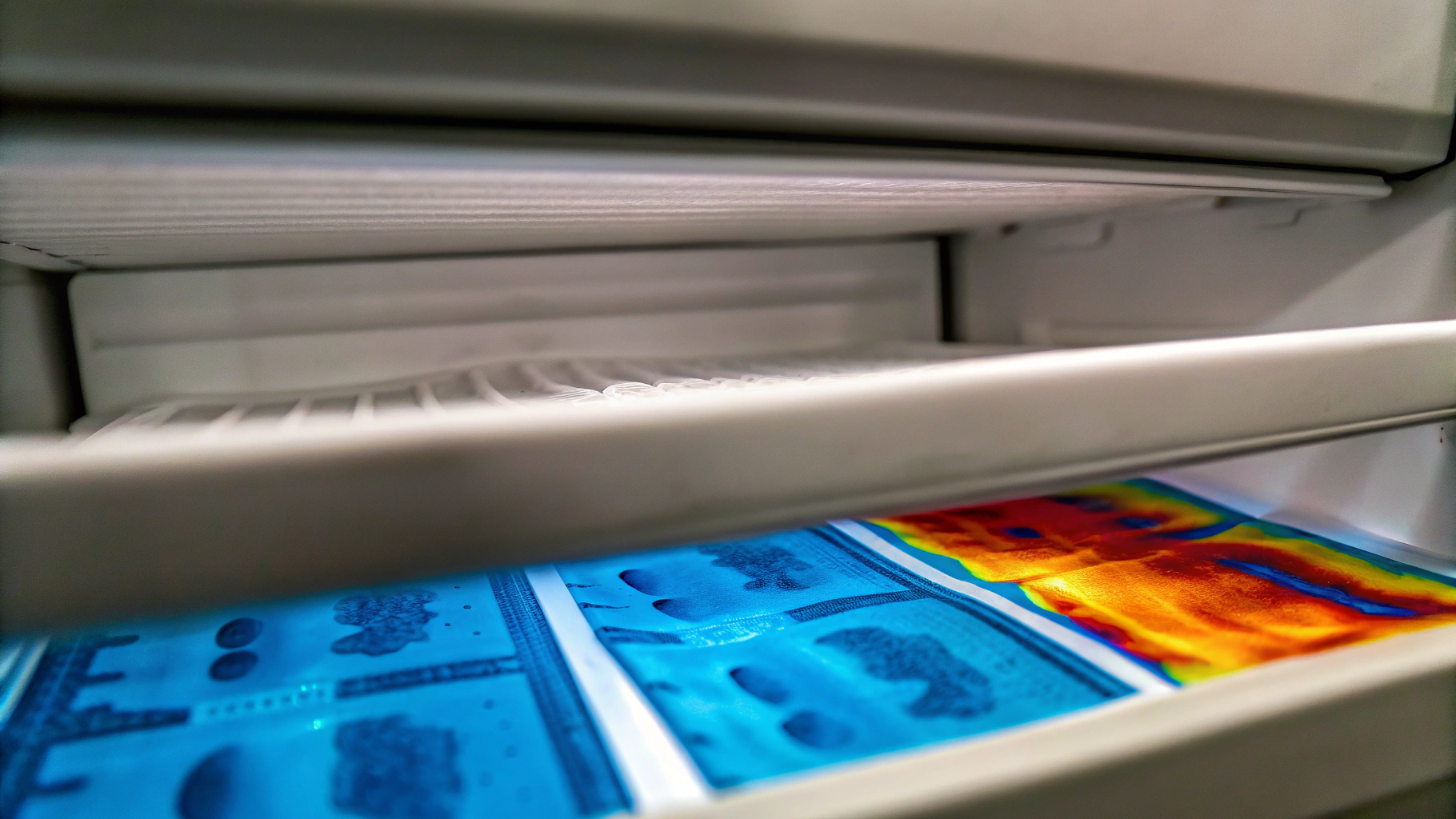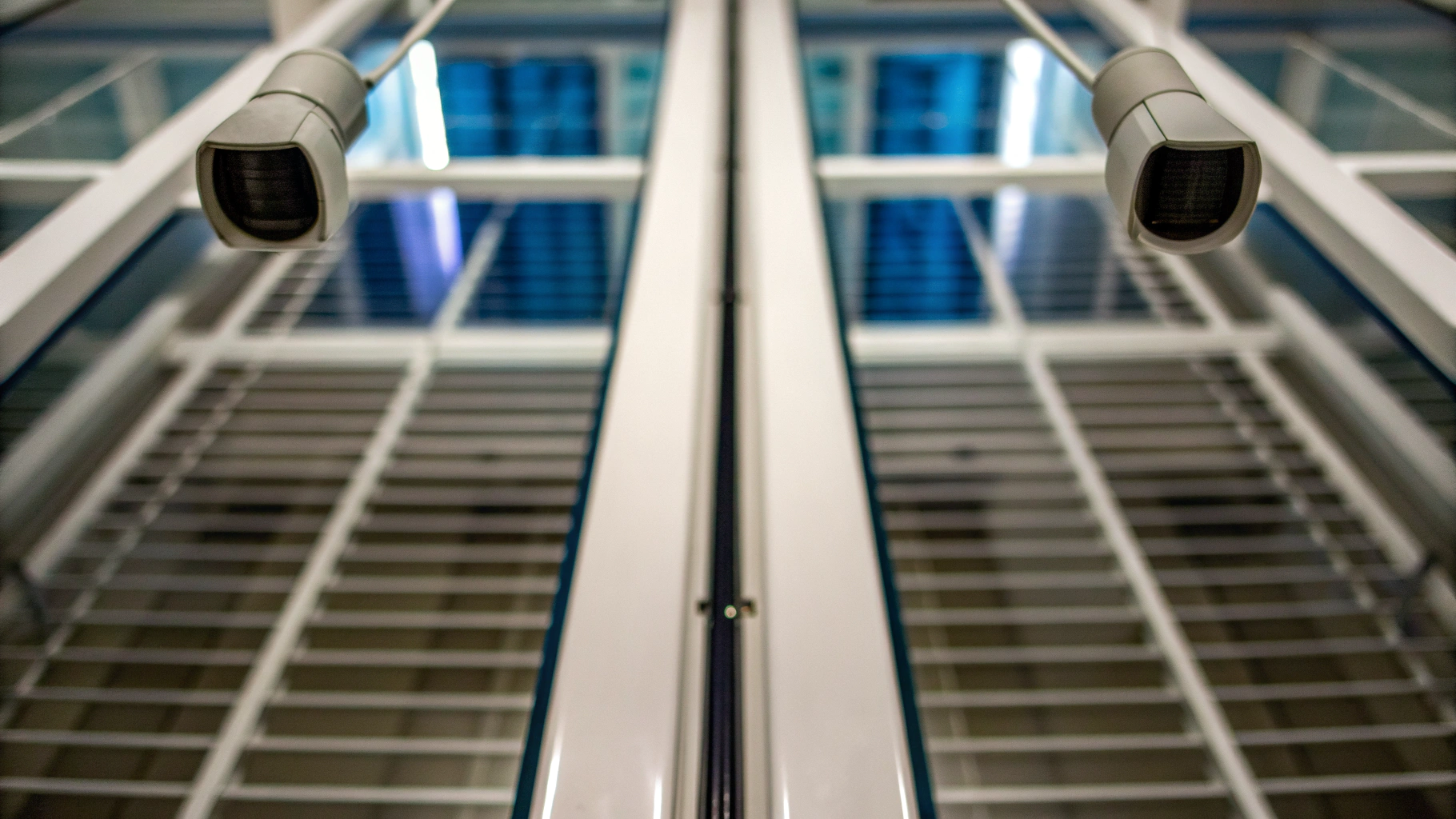Master Freezer Temperature Mapping: A Step-by-Step Guide

Overview
Freezer temperature mapping is crucial for maintaining the integrity of sensitive products, particularly pharmaceuticals. These products must be stored within specific temperature ranges to prevent degradation, which poses significant compliance challenges.
To address these challenges, this article outlines a systematic approach to mapping. It begins with defining the scope of the mapping process, followed by selecting the appropriate equipment tailored to the specific needs of your facility. Next, the execution of the mapping process is detailed, ensuring that every step is meticulously followed. After data collection, analyzing the results for compliance is essential, allowing for the identification of any deviations from established standards. Finally, implementing corrective actions is vital to rectify any issues and enhance future compliance efforts.
Thorough documentation throughout this process cannot be overstated. It serves not only as a record for regulatory adherence but also as a foundation for continuous improvement in product integrity. By maintaining detailed records, organizations can demonstrate their commitment to compliance and quality assurance.
Consider the success stories of companies that have implemented robust freezer temperature mapping protocols. These case studies illustrate the tangible benefits of adhering to best practices, showcasing how effective compliance solutions can lead to improved product safety and regulatory standing.
In conclusion, engaging with AVS Life Sciences for your compliance needs can significantly enhance your operational standards. By prioritizing freezer temperature mapping, you not only safeguard your products but also reinforce your commitment to excellence in the pharmaceutical industry.
Introduction
Mastering freezer temperature mapping is crucial for organizations managing sensitive products, especially in the pharmaceutical and biologics sectors. This meticulous process not only protects product integrity but also ensures adherence to stringent regulatory standards. Yet, many companies struggle with the complexities of effectively implementing temperature mapping protocols.
How can businesses navigate the intricacies of this critical practice? By enhancing operational efficiency and safeguarding their valuable assets, they can achieve compliance and protect their reputation.
To address these challenges, organizations must adopt comprehensive temperature mapping strategies that align with regulatory requirements. This involves not just understanding the science behind temperature fluctuations but also implementing robust monitoring systems that provide real-time data.
Consider the case of a leading pharmaceutical company that successfully revamped its temperature mapping process. By investing in advanced monitoring technology and training staff on compliance protocols, they not only improved product safety but also streamlined their operations, resulting in significant cost savings.
In conclusion, mastering freezer temperature mapping is not merely a regulatory obligation; it is a strategic imperative. Organizations that prioritize this practice will not only enhance their operational efficiency but also protect their most valuable assets.
Understand Temperature Mapping Fundamentals
Freezer temperature mapping is a critical process that involves measuring and documenting heat variations within controlled environments, such as freezers or warehouses. By strategically placing thermal sensors, organizations can capture essential data over a specified period. The primary objective? To ensure that heat remains within acceptable limits, safeguarding delicate products like pharmaceuticals and biologics from degradation.
Understanding the fundamentals of thermal mapping requires recognizing the categories of thermal distribution—static versus dynamic—and the significance of ambient conditions. Moreover, it’s vital to acknowledge the potential risks associated with thermal excursions. These excursions can lead to significant compliance challenges, impacting product integrity and regulatory adherence.
To navigate these challenges effectively, companies must implement robust strategies for freezer temperature mapping. This includes regular monitoring and documentation, which not only helps in maintaining compliance but also enhances operational efficiency. For instance, organizations that have successfully integrated comprehensive freezer temperature mapping solutions have reported improved product quality and reduced waste.
In conclusion, grasping the essentials of thermal mapping is not just about compliance; it’s about protecting valuable assets and ensuring the reliability of sensitive products. By prioritizing this process, businesses can mitigate risks and foster a culture of quality assurance.

Prepare for Temperature Mapping: Key Considerations
Before initiating temperature mapping, it’s crucial to address several key considerations that ensure compliance and effectiveness:
-
Define the Scope: Clearly determine the specific areas to be mapped and the products involved. Effective monitoring requires understanding the permissible heat range for each product, particularly in the context of freezer temperature mapping.
-
Select Suitable Equipment: Opt for calibrated thermal loggers or sensors that adhere to industry standards. These devices must be capable of capturing data at the required intervals to ensure accuracy.
-
Plan for Environmental Conditions: Take into account external factors such as seasonal climate fluctuations and the operational conditions of the storage area. Ideally, mapping should occur during extreme conditions to identify potential vulnerabilities.
-
Develop a Mapping Protocol: Establish a detailed protocol that outlines the methodology, including device placement, study duration, and data collection intervals. This structured approach not only enhances compliance but also reinforces the integrity of freezer temperature mapping.

Execute the Temperature Mapping Process
To effectively execute the temperature mapping process, adhere to the following steps:
-
Device Placement: Strategically position heat monitors throughout the storage area to ensure comprehensive coverage of all critical zones. It’s advisable to place devices at varying heights and locations to accurately capture temperature gradients.
-
Initiate Information Collection: Begin the logging process, confirming that all sensors are functioning correctly. Vigilantly monitor the system for any immediate issues that may arise.
-
Duration of Charting: Conduct the charting over a minimum of 24 hours to capture temperature variations throughout different times of the day. For a more thorough analysis, consider extending the duration to encompass weekly variations.
-
Monitor Conditions: Throughout the mapping period, remain vigilant regarding external conditions that could impact results, such as door openings or equipment malfunctions.
By following these steps, you not only ensure compliance but also enhance the reliability of your temperature mapping efforts.

Analyze and Interpret Temperature Mapping Data
After collecting temperature data, the next step is to analyze and interpret the results of the freezer temperature mapping to ensure compliance with GXP and FDA regulations. This process is crucial for maintaining the integrity of your operations and safeguarding product quality.
-
Data Review: Begin by examining the recorded readings for any excursions beyond acceptable limits. Are there patterns or trends that indicate persistent issues? Identifying these deviations is essential for proper freezer temperature mapping, as they must be documented according to best practices.
-
Statistical Analysis: Employ statistical methods to assess the overall stability of the measurements. Calculating the mean, median, and standard deviation of the readings provides a quantitative basis for evaluating climate control. This analysis not only supports adherence to regulatory standards but also enhances your compliance strategy.
-
Identifying hot and cold spots is critical, and this can be achieved effectively through freezer temperature mapping to map areas that consistently show temperature deviations. This information allows for necessary adjustments to the storage environment, ensuring strict adherence to Standard Operating Procedures (SOPs).
-
Prepare a Summary Report: Document your findings in a clear and concise report. Highlight any areas of concern and provide recommendations for corrective actions. This report should conform to both internal and external auditing methods, preserving information integrity and compliance.
By following these steps, you can effectively navigate compliance challenges and enhance your operational standards. Are you ready to take action towards ensuring your processes meet the highest regulatory requirements?

Document Findings and Implement Corrective Actions
Once the data has been analyzed, documenting the findings and implementing corrective actions is crucial for compliance and operational integrity:
-
Comprehensive Documentation: Start by creating a detailed report that encompasses the layout protocol, sensor locations, raw data, analysis results, and any deviations observed. This documentation is not just a formality; it’s vital for regulatory compliance and future reference.
-
Corrective Action Plan: Next, develop a robust plan to address any identified issues. This may involve adjusting the climate control system, enhancing insulation, or modifying storage practices. Each action should be tailored to effectively mitigate the specific challenges uncovered during analysis.
-
Follow-Up Monitoring: After executing the corrective measures, it’s essential to carry out follow-up monitoring of heat levels. This step verifies that the adjustments have successfully resolved the problems and ensures ongoing compliance.
-
Continuous Improvement: Finally, establish a routine for periodic temperature mapping and review of storage conditions. This proactive approach not only maintains compliance but also safeguards product integrity over time.
By following these steps, organizations can navigate compliance challenges effectively, ensuring both regulatory adherence and operational excellence.

Conclusion
Mastering freezer temperature mapping is not just a regulatory requirement; it’s a critical component in safeguarding the integrity and safety of sensitive products, especially in the pharmaceutical and biologics sectors. Organizations that adopt a structured approach to temperature mapping can effectively monitor and document heat variations, protecting valuable assets while ensuring compliance with stringent regulatory standards.
This article outlines a comprehensive process that begins with grasping the fundamentals of temperature mapping. It emphasizes the importance of thorough preparation, executing the mapping process meticulously, analyzing data rigorously, and documenting findings accurately. Key considerations include:
- Defining the scope of the mapping
- Selecting the right equipment
- Developing a detailed mapping protocol
The significance of thorough data analysis and corrective action plans cannot be overstated; these steps are vital in addressing deviations and ensuring ongoing compliance.
The importance of effective freezer temperature mapping extends beyond mere regulatory compliance. It cultivates a culture of quality assurance that can lead to enhanced product quality and reduced waste. Organizations are urged to embrace these best practices and commit to continuous monitoring and improvement. By doing so, they not only enhance their operational excellence but also safeguard their most critical products.
In conclusion, the journey towards mastering freezer temperature mapping is one that demands attention and action. Are you ready to elevate your compliance strategies and ensure the safety of your sensitive products? Engage with AVS Life Sciences today to explore tailored solutions that can help you achieve excellence in your operations.
Frequently Asked Questions
What is freezer temperature mapping?
Freezer temperature mapping is the process of measuring and documenting heat variations within controlled environments, such as freezers or warehouses, to ensure that temperatures remain within acceptable limits for sensitive products like pharmaceuticals and biologics.
Why is temperature mapping important?
Temperature mapping is important because it safeguards delicate products from degradation due to heat variations, ensures compliance with regulatory standards, and enhances operational efficiency.
What are the two categories of thermal distribution in temperature mapping?
The two categories of thermal distribution are static and dynamic thermal distribution.
What are the potential risks associated with thermal excursions?
Thermal excursions can lead to significant compliance challenges, impacting product integrity and regulatory adherence.
What strategies should companies implement for effective freezer temperature mapping?
Companies should implement regular monitoring and documentation of temperatures, which helps maintain compliance, improves product quality, and reduces waste.
What key considerations should be addressed before initiating temperature mapping?
Key considerations include defining the scope of mapping, selecting suitable equipment, planning for environmental conditions, and developing a detailed mapping protocol.
What should be included in a mapping protocol?
A mapping protocol should outline the methodology, including device placement, study duration, and data collection intervals to enhance compliance and the integrity of the mapping process.
Why is it important to consider environmental conditions during temperature mapping?
Considering environmental conditions, such as seasonal climate fluctuations, is important to identify potential vulnerabilities and ensure that mapping accurately reflects the storage area's performance under extreme conditions.
